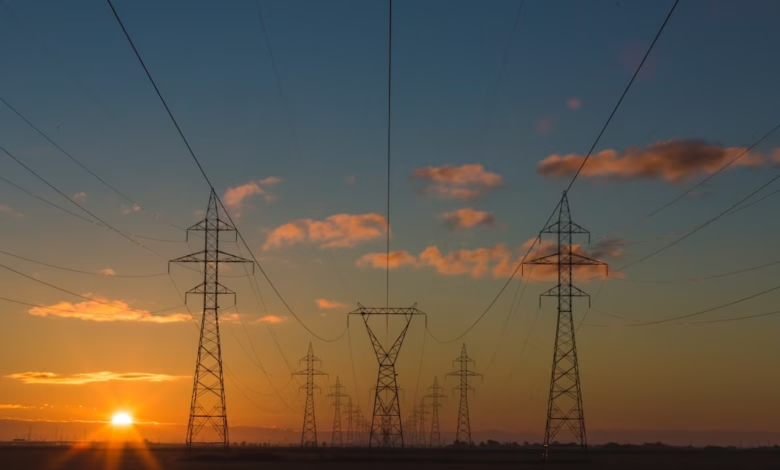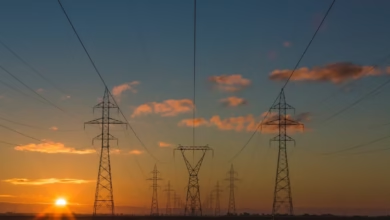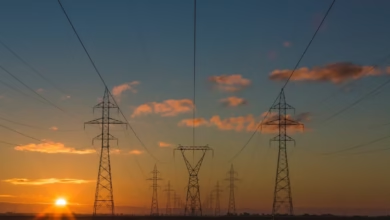Advancements in Energy Storage: Innovations Driving the Renewable Energy Transition and Shaping Global Markets

As the world grapples with the urgent need to transition from fossil fuels to greener alternatives, energy storage technologies have emerged as a critical component in the quest for a sustainable future. Innovations in batteries, supercapacitors, and other energy storage solutions are not only revolutionizing how we harness renewable energy sources like solar power and wind energy but also enhancing energy efficiency and security across the globe. This article delves into the latest advancements in energy storage technologies, exploring their pivotal role in the renewable energy transition and their implications for energy markets, policy, and climate change solutions. By examining future trends and the impact of energy storage on global energy dynamics, we will uncover how these innovations are shaping the landscape of energy economics and paving the way for a more resilient and sustainable energy infrastructure. Join us as we explore the intersection of energy storage, smart grids, and the emerging fields of hydrogen energy and carbon capture, highlighting the essential contributions of energy R&D and investment in fostering a cleaner, greener future.
- 1. Innovations in Energy Storage Technologies: Batteries, Supercapacitors, and Beyond
- 2. The Role of Energy Storage in the Renewable Energy Transition: Enhancing Energy Efficiency and Security
- 3. Future Trends in Energy Storage: Impact on Global Energy Markets and Climate Change Solutions
1. Innovations in Energy Storage Technologies: Batteries, Supercapacitors, and Beyond
The quest for improved energy storage technologies is critical to supporting the transition toward renewable energy and enhancing energy efficiency in today’s energy markets. Innovations in energy storage, particularly in batteries and supercapacitors, are paving the way for a more sustainable future, reducing reliance on fossil fuels, and promoting the use of green energy sources like solar power and wind energy.
Recent advancements in battery technology, including lithium-ion batteries and emerging alternatives such as solid-state and flow batteries, have significantly improved energy density, charging speed, and overall lifespan. These innovations are not only essential for electric vehicles (EVs) but also for stationary applications that help balance energy supply and demand, particularly in smart grids. By integrating advanced battery systems, we can better manage energy transportation and bolster energy security, ensuring a reliable power supply even during peak demand periods.
Supercapacitors are another area of innovation, offering rapid charging and discharging capabilities that complement traditional batteries. They can effectively store energy generated from intermittent renewable sources and release it instantaneously, making them invaluable in applications ranging from public transportation to grid stabilization. This synergy between batteries and supercapacitors enhances the overall effectiveness of energy storage solutions, contributing to a more resilient energy infrastructure.
Beyond batteries and supercapacitors, other technologies are also on the rise, including thermal energy storage and hydrogen energy solutions. Thermal energy storage systems can capture excess energy from renewable sources and release it as needed, while hydrogen energy presents a promising avenue for long-term energy storage and transportation. These advancements align with global energy trends emphasizing carbon capture and the integration of bioenergy and hydropower in energy policy frameworks, thus supporting the energy transition.
Investment in energy R&D is crucial to pushing these innovations further, as it enables the development of more efficient and cheaper energy storage systems. This investment not only fosters technological progress but also ensures that nations can capitalize on energy exports while reducing imports, strengthening their energy economics and independence.
Overall, the ongoing innovations in energy storage technologies play a vital role in addressing climate change challenges and enhancing global energy security. As we move toward a future dominated by renewable energy, these advancements will be instrumental in shaping a sustainable energy landscape that prioritizes energy efficiency and resilience against the backdrop of fluctuating energy demands.
2. The Role of Energy Storage in the Renewable Energy Transition: Enhancing Energy Efficiency and Security
As the world increasingly shifts towards renewable energy sources, the role of energy storage technologies has never been more crucial. Energy storage solutions, including batteries, supercapacitors, and other innovative systems, are vital for enhancing energy efficiency and ensuring energy security during the energy transition. This transition aims to reduce reliance on fossil fuels and promote the use of green energy, such as solar power, wind energy, hydropower, and bioenergy.
Energy storage acts as a buffer between energy supply and demand, allowing for the effective integration of renewable energy sources into energy markets. Given the intermittent nature of solar and wind energy, energy storage systems can capture excess energy generated during peak production times and release it when demand is high, thereby stabilizing the grid and supporting smart grids' implementation. This capability is essential for managing the fluctuations inherent in renewable energy generation, ultimately enhancing overall energy efficiency.
The advancements in energy storage technologies also play a significant role in energy security. By providing a reliable backup power source, these systems help mitigate risks associated with energy imports and exports, reducing vulnerability to geopolitical tensions and fluctuations in fossil fuel markets. Moreover, energy storage can facilitate the adoption of electric vehicles, which are crucial for decreasing carbon emissions and combating climate change. By integrating energy storage with electric vehicle infrastructure, we can develop a more resilient and efficient energy transportation system.
As countries commit to ambitious energy policies aimed at carbon capture and lowering greenhouse gas emissions, energy storage will be at the forefront of this effort. Investments in energy R&D are vital for developing next-generation storage technologies, including thermal energy storage and hydrogen energy systems, which can further enhance energy resilience and support a diversified energy portfolio.
In summary, energy storage technologies are pivotal in the renewable energy transition. They enhance energy efficiency, bolster energy security, and create opportunities for smarter energy economics. As global energy trends continue to evolve, the role of energy storage will only grow, making it an indispensable part of our future energy landscape.
3. Future Trends in Energy Storage: Impact on Global Energy Markets and Climate Change Solutions
The future trends in energy storage are poised to significantly impact global energy markets and contribute to climate change solutions. As the world shifts towards renewable energy sources such as solar power, wind energy, and hydropower, the demand for effective energy storage solutions becomes increasingly critical. Advanced battery technologies and supercapacitors are at the forefront of this transition, enabling higher energy efficiency and supporting the integration of distributed energy resources into smart grids.
One of the most notable trends is the growing investment in energy storage systems, driven by the need to balance intermittent renewable energy generation with consistent energy demand. This shift not only enhances energy security but also reduces reliance on fossil fuels and improves the overall energy economics of renewable energy projects. Additionally, innovations in thermal energy storage and hydrogen energy technologies are emerging, further diversifying energy storage options.
As energy storage technologies mature, they will facilitate the advancement of electric vehicles (EVs) and the decarbonization of the transportation sector. This transition is essential for reducing greenhouse gas emissions and combating climate change. Furthermore, energy R&D is focusing on carbon capture and utilization, which can complement energy storage capabilities by mitigating emissions from existing energy sources, including fossil fuels and nuclear energy.
The implications of these trends extend beyond environmental benefits; they also reshape energy policy and global energy trends. Countries are likely to enhance their energy exports and imports strategies based on advancements in energy storage, influencing international markets. The rise of offshore energy projects and bioenergy initiatives highlights the interconnected nature of energy investments and the necessity for collaborative global efforts in achieving sustainable energy solutions.
In conclusion, the future of energy storage is intertwined with the broader energy transition. By improving energy storage capabilities, the world can move towards a more resilient and efficient energy system, ultimately paving the way for a sustainable future that mitigates climate change and supports the growth of green energy markets.
In conclusion, energy storage technologies are at the forefront of the global energy transition, offering innovative solutions that significantly enhance energy efficiency and security. As we have explored, advancements in batteries, supercapacitors, and other storage methods are not only pivotal for integrating renewable energy sources such as solar power and wind energy but also crucial for reducing our dependence on fossil fuels and nuclear energy. With the rise of smart grids and distributed energy systems, energy storage plays a vital role in stabilizing energy markets and supporting the increasing demand for green energy.
Looking ahead, the trends in energy storage will continue to shape energy policy and economics, influencing investments in renewable energy projects and infrastructure. By prioritizing energy R&D and exploring options like hydrogen energy and thermal energy storage, we can pave the way for a more sustainable future that mitigates climate change impacts. Moreover, as energy exports and imports evolve alongside the energy transition, the importance of energy security and carbon capture technologies becomes ever more critical.
As we navigate these global energy trends, it is clear that innovations in energy storage are essential not only for improving energy efficiency but also for fostering a resilient and sustainable energy landscape. By embracing these advancements, we can work toward a cleaner, greener future that benefits both our planet and future generations.





